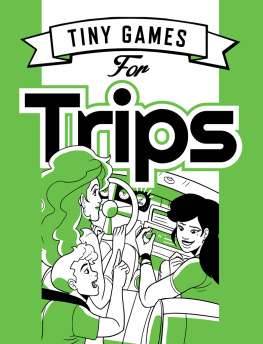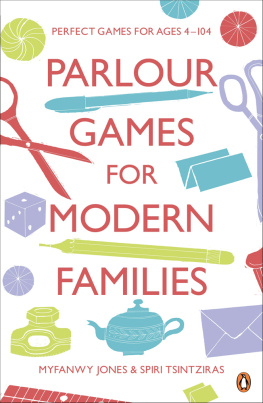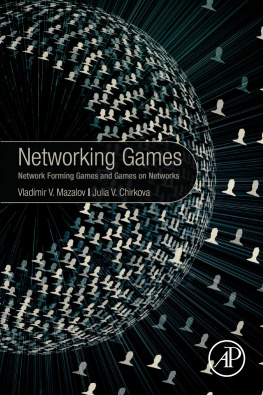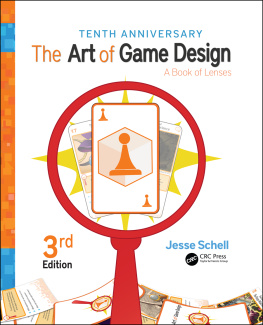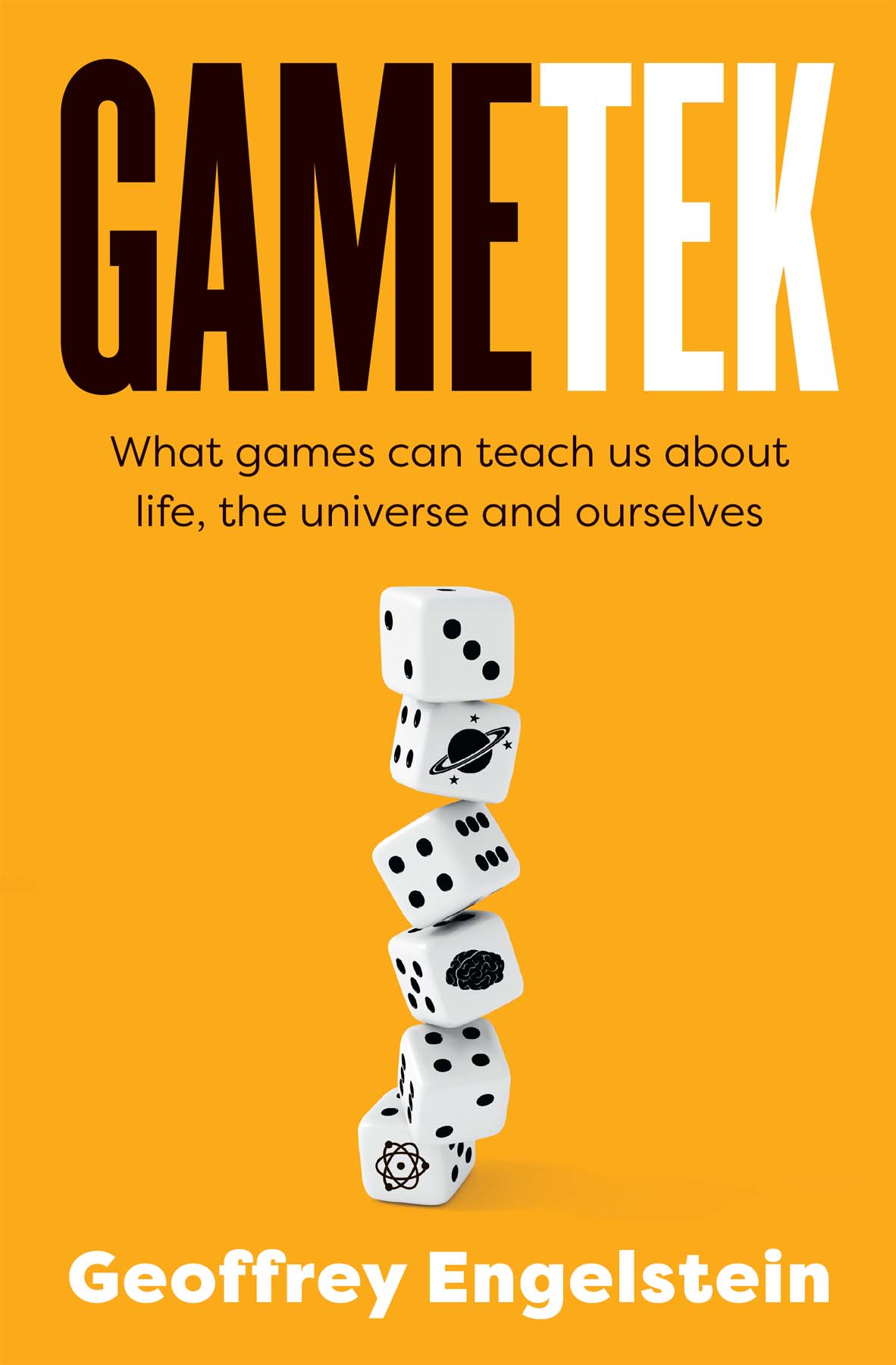Contents
Guide
To Susan: Alea iacta est!
Contents
Ive been obsessed with science and math and games my entire life, and I voraciously read many, many books about them when I was growing up.
Two seminal works for me are Gdel, Escher Bach: An Eternal Golden Braid by Douglas Hofstadter, and The Ascent of Man by Jacob Bronowski. I encountered both of these when I was 14, and I was blown away by the way that they each took disparate concepts and wove them together into a coherent picture of the universe and our place in it. Part detective stories, part towering works of construction, these books show how everything is connected to everything else.
When Tom Vasel, one of the hosts of the premier podcast about board games in the US, The Dice Tower, announced that they were looking for new segment ideas, I thought it would be a fun project to try to come up with one. The opportunity to try to do what Hofstadter and Bronowski had done so brilliantly, in my own small way, was irresistible, and almost immediately I came up with the idea of using games to explain math, science and psychology. But I was very concerned that I wouldnt be able to keep the segment going, either for the short or long term. My life is strewn with the carcasses of projects begun and abandoned. And I was fairly confident that I could only get, at most, twenty segments out of the idea.
To convince myself that it was viable, I decided to write and record three segments, to give myself a little buffer, and also to give Tom an idea of what I had in mind. Those first three segments were Dice and Luck, Reviews, and a discussion of the potential to use touchscreen tables for playing games. The first two have been included in this book (see Chapters ). The third, my discussion of the then-prototype Microsoft Surface Table, is a little dated now.
The first GameTek segment aired on The Dice Tower episode 104 in August 2007. And my estimate of 20 segments was obviously way off base. I dont have an exact count, but I am pretty sure there have been over 200 at this point. Just when I think Ive run out of things to talk about, some new research or concept arrives to prove me wrong. And over ten years later, I was thrilled to have the opportunity to collect many of the best of them here in this book.
Over the years of broadcasting GameTek, I have come to realise that games are, in many ways, an ideal way to tie together the disparate threads of math and science. The idea of play, which is at the heart of games, is a fundamental human behaviour beyond humans, actually, as any observation of young animals will readily demonstrate. It is as fundamental as eating or breathing. Yet because we associate playing with fun, to use games both familiar and new as a way to introduce concepts helps get past the barrier that many people erect as soon as they see an equation. Games truly can make learning fun.
Rather than present the material as it was chronologically broadcast, I have combined it into chapters with related concepts. While chapters do cross-reference each other and highlight connections between certain concepts, you are invited to skip around and drop into chapters that seem interesting, and then return where you were later. It is not necessary to read this book from front to back.
Before ending this introduction, I would like to express how GameTek and The Dice Tower podcast have opened doors for me, and allowed me to meet many amazing people. Researching and preparing GameTek is what inspired me to try my own hand at designing games, and led to my own podcast, Ludology, and my professorship at the NYU Game Center.
Thanks so much to you and to all the fans over the years. My life is immeasurably richer from being a part of the global community of gamers.
In a game where there is no hidden information and no luck, there will always exist a series of moves for one player that will lead to a win or a draw. Tic-Tac-Toe (Noughts and Crosses) is a trivial example to guarantee a win or draw, the first player must always play in the centre square while more complex examples like Chess or Go are presently impossible for computers to map out.
However, this is not true for most of the games we play.
In Rock-Paper-Scissors, unlike Tic-Tac-Toe, there is no single series of moves that you should always play in response to what your opponent does. If you always play Rock, your opponent will catch on and start always playing Paper.
The core concept of Rock-Paper-Scissors that A beats B, B beats C, but C beats A is a fundamental idea in games. Surprisingly, the earliest trace of the game is in writings from the Chinese Ming dynasty, in the 1600s. Compare this with dice and playing boards, which go back more than 5000 years!
From China, the game spread to Japan and the rest of Asia, and then to North America and Europe as migration carried people to those continents. The symbols and their names have changed in various cultures, but the current Rock, Paper and Scissors actually match what was originally used in China.
Rock-Paper-Scissors Strategies
One option in playing a series of Rock-Paper-Scissors games is to try to guess what your opponent is going to do and craft a strategy around that. For example, if your opponent always plays Rock, or plays it more than a third of the time, you switch to playing Paper more often.
This is called an exploitation strategy, because youre trying to take advantage of suboptimal play by your opponent. The danger with exploitation strategies is that they are open to counter-exploitation. If you switch to playing mostly Paper, your opponent may switch to playing Scissors more often. So, you switch to Rock, and around and around we go.
However, is there a way to get off this exploitation strategy merry-go-round?
Mathematicians studying game theory have proven that, for any game, there is a mix of strategies called the optimal strategy. If you play the optimal strategy, it doesnt matter what your opponent does you will end up with a consistent result.
Now, for Rock-Paper-Scissors, the optimal strategy is simply to play Rock, Paper and Scissors each one-third of the time. But you cant play them in sequence or in a particular order. This is known as a mixed strategy, where you play a suite of moves in different proportions, selected randomly.
There are several interesting properties of using this strategy in Rock-Paper-Scissors, and mixed strategies in general. The first is that it does not guarantee that you will win any single game. However, if you play many, many games, there is no strategy your opponent can use that will cause you to lose over the long haul.
Next, the outcome of this strategy is invariant it does not change, regardless of what your opponent does. It factors out what your opponent does. For example, lets say your opponent plays Rock 100 per cent of the time. Now, against this strategy you will win one-third of the time, when you select Paper, lose one-third of the time, and draw the other third. In fact, against any strategy your opponent picks, you will have an equal number of wins and losses.
Of course, if your opponent is playing a suboptimal strategy, you may be tempted to change your strategy to try to exploit it switching to more Paper if your opponent is playing more Rock, as we discussed earlier. But then you are opening yourself up to your opponent taking advantage of your play, and thereby ending up with a worse result.
Next page



